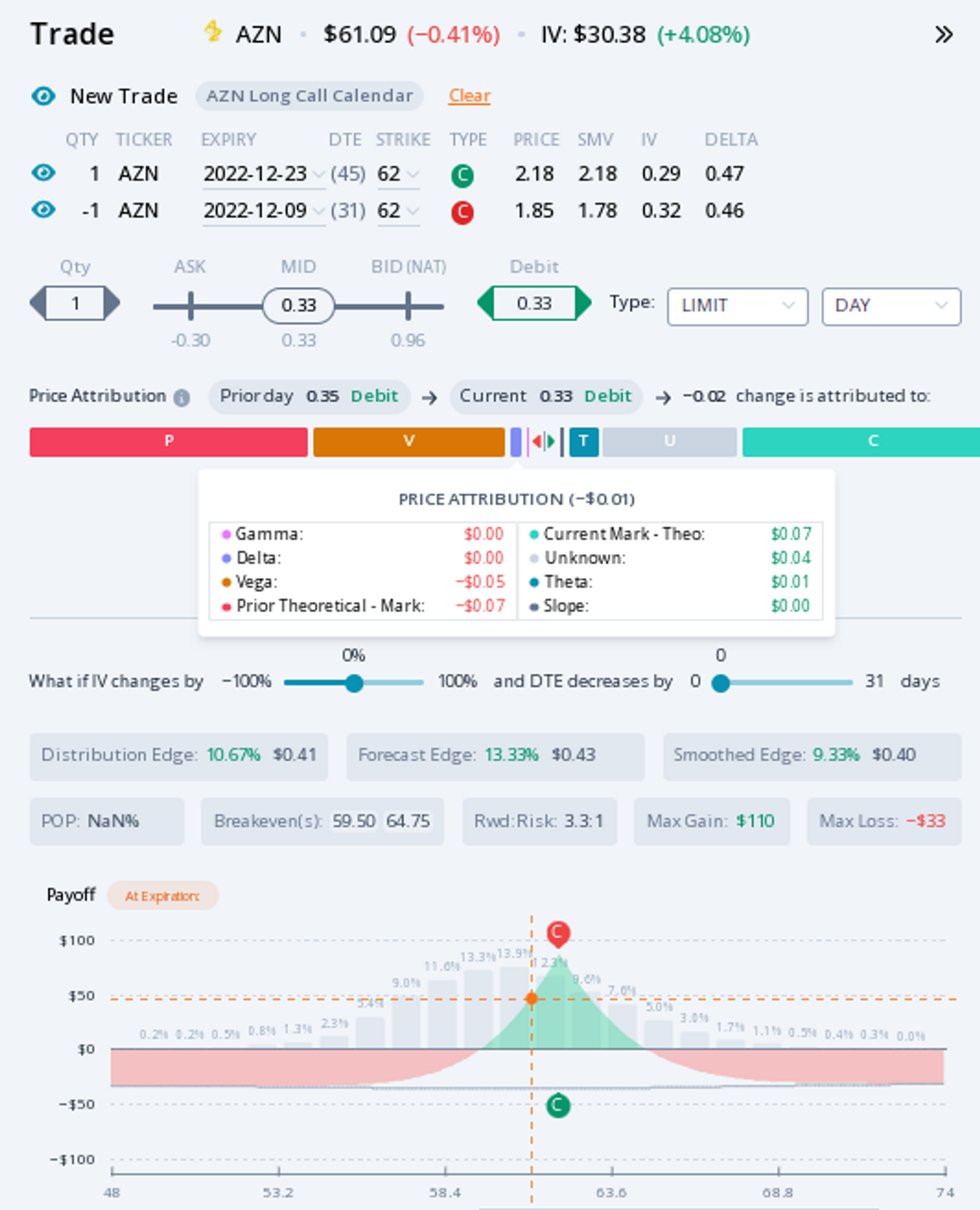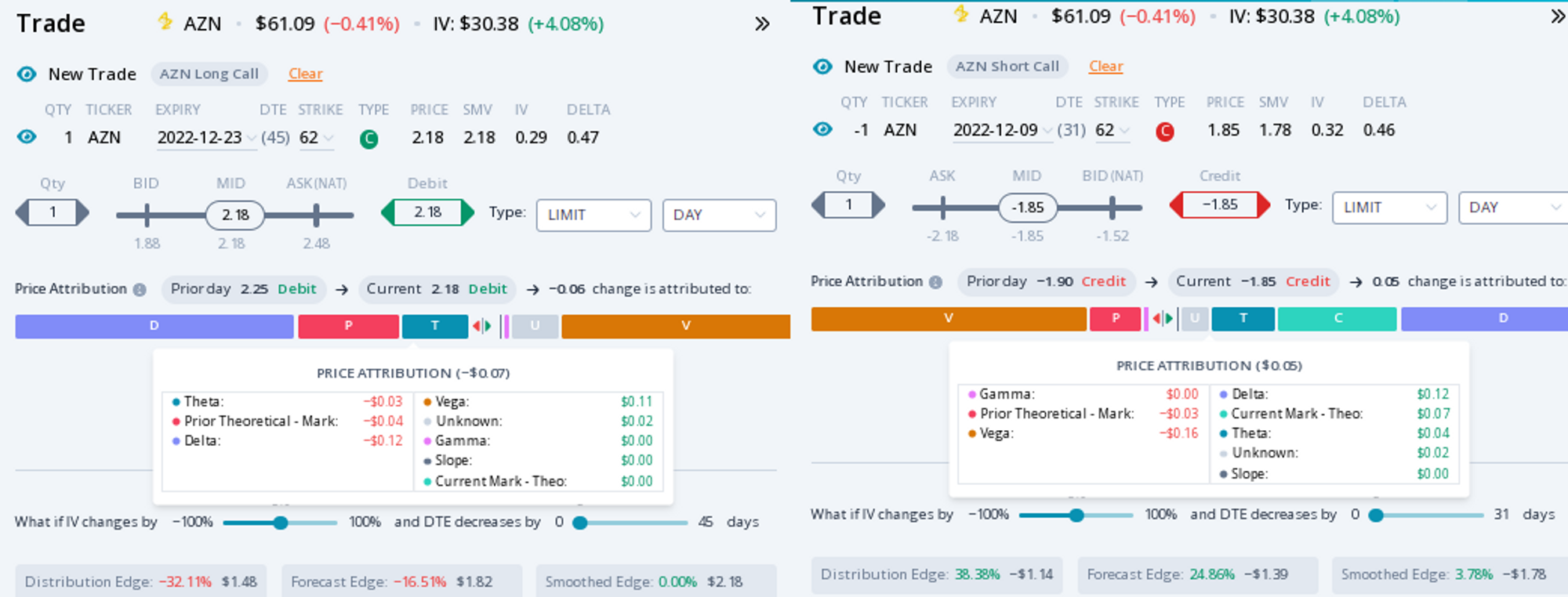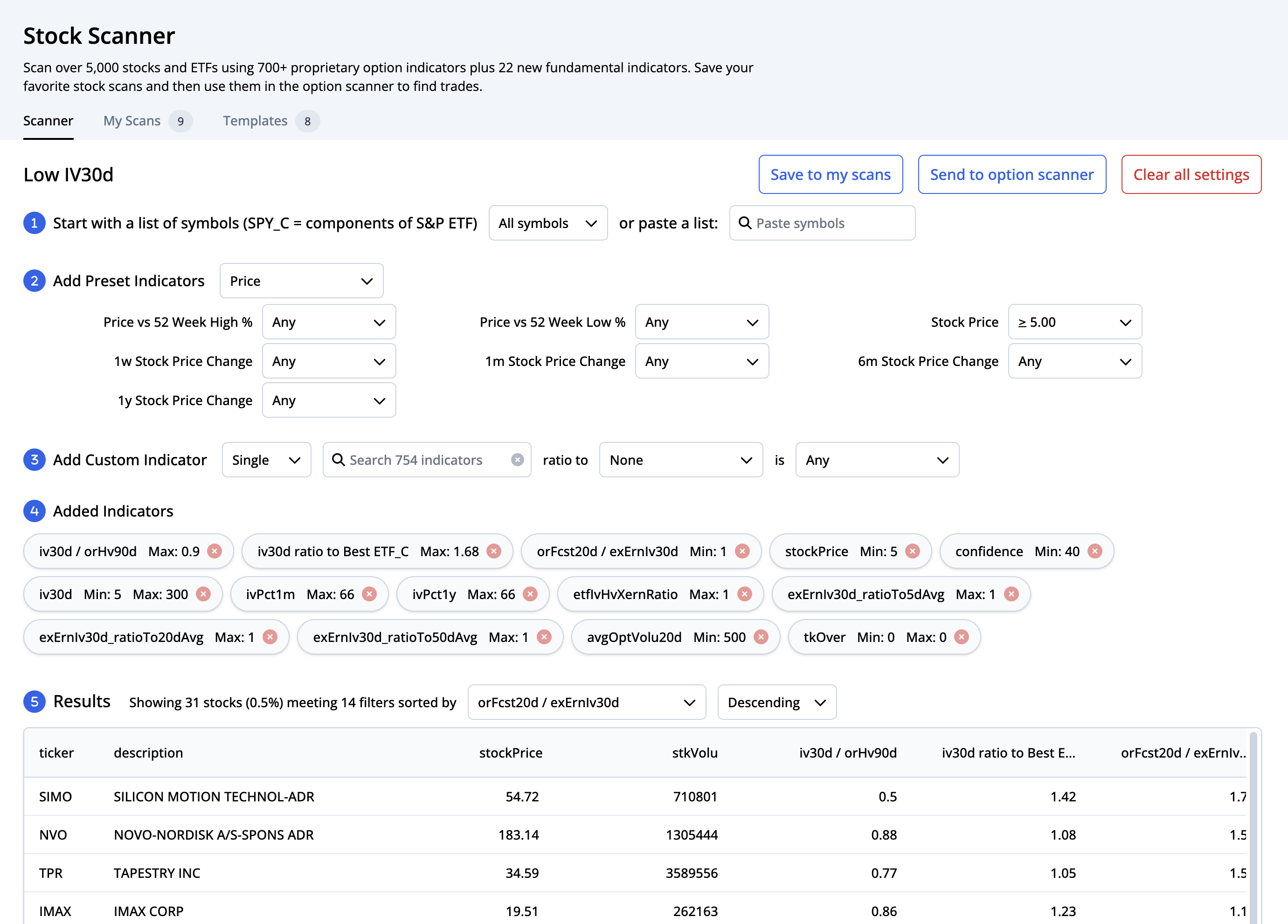Trading
Wednesday, November 9th 2022
Applying Profit Attribution To Changes In Options Prices
Profit attribution helps options traders figure out how a position made or lost money from delta, theta, gamma, vega, slope and marks.
Summary
Profit attribution can help options traders understand how a position made or lost money from factors like delta, gamma, vega, theta, slope, and marks. By analyzing these factors, traders can better understand the profitability of their trades and positions. The profit attribution feature is available on the ORATS dashboard.
Have you ever wondered why you made or lost money from a particular trade or position? The new profit attribution can help you figure that out.
The profit attribution works for existing positions and for trades you are considering.
For example, lets say you are considering a calendar spread in Astra Zeneca (AZR) before earnings tomorrow. The December 23rd, 9th $62 strike call spread is priced at $0.33 now down from $0.35 yesterday. What is that $0.02 difference attributed?

As shown in the Price Attribution (not called profit attribution because you do not have a position), we attribute that difference to the following factors: Delta, Gamma, Vega, Prior and Current Marks, Theta, Slope, and Unknown.
The delta of a call will add to the profit if the stock is up. The gamma will add to any long option where the stock moved. The vega will add to the profit of a long option if the IV is up. The theta will add to profit for any short options. The current mark minus the theoretical value will add to profit if greater than zero. The prior theoretical value minus the prior mark will add to the profit if greater than zero. The put-call slope will add to the profit for long put options. Unknown is what's left over after adding all these attributions together and comparing to the actual change.
For this spread, you can add the profit attributions of each call together to find the total.

The delta offset. The gamma was zero for both. The vega interestingly was net negative with the IV up. This happened because the IV was up more for the short call than the long call. The theta was greater for the short-term option. The current mark minus the theoretical value added. The prior theoretical value minus the prior mark subtracted from the total. The put-call slope change had no effect. Unknown was additive.
Give this feature a try at https://dashboard.orats.com
Disclaimer:
The opinions and ideas presented herein are for informational and educational purposes only and should not be construed to represent trading or investment advice tailored to your investment objectives. You should not rely solely on any content herein and we strongly encourage you to discuss any trades or investments with your broker or investment adviser, prior to execution. None of the information contained herein constitutes a recommendation that any particular security, portfolio, transaction, or investment strategy is suitable for any specific person. Option trading and investing involves risk and is not suitable for all investors.
All opinions are based upon information and systems considered reliable, but we do not warrant the completeness or accuracy, and such information should not be relied upon as such. We are under no obligation to update or correct any information herein. All statements and opinions are subject to change without notice.
Past performance is not indicative of future results. We do not, will not and cannot guarantee any specific outcome or profit. All traders and investors must be aware of the real risk of loss in following any strategy or investment discussed herein.
Owners, employees, directors, shareholders, officers, agents or representatives of ORATS may have interests or positions in securities of any company profiled herein. Specifically, such individuals or entities may buy or sell positions, and may or may not follow the information provided herein. Some or all of the positions may have been acquired prior to the publication of such information, and such positions may increase or decrease at any time. Any opinions expressed and/or information are statements of judgment as of the date of publication only.
Day trading, short term trading, options trading, and futures trading are extremely risky undertakings. They generally are not appropriate for someone with limited capital, little or no trading experience, and/ or a low tolerance for risk. Never execute a trade unless you can afford to and are prepared to lose your entire investment. In addition, certain trades may result in a loss greater than your entire investment. Always perform your own due diligence and, as appropriate, make informed decisions with the help of a licensed financial professional.
Commissions, fees and other costs associated with investing or trading may vary from broker to broker. All investors and traders are advised to speak with their stock broker or investment adviser about these costs. Be aware that certain trades that may be profitable for some may not be profitable for others, after taking into account these costs. In certain markets, investors and traders may not always be able to buy or sell a position at the price discussed, and consequently not be able to take advantage of certain trades discussed herein.
Be sure to read the OCCs Characteristics and Risks of Standardized Options to learn more about options trading.
Related Posts



